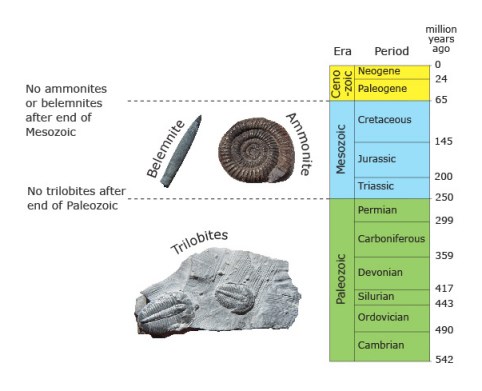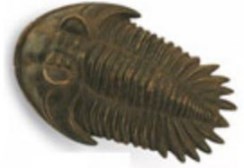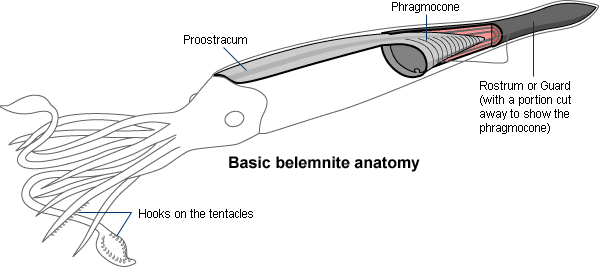Introduction
The given coordinates for this EarthCache will take you to an entrance to the Houndshill shopping centre in the shadow of Blackpool Tower. There are stretches of limestone flooring throughout the ground floor that incorporate numerous examples of fossilised marine creatures.
In order to complete this EarthCache you will need to go inside the shopping centre, estimate the geologic age of the fossiliferous limestone used to make the floors, deduce the nature of the depositional environment the stone was laid down in and use one of the fossils in the stone to estimate the full length of the living creature.
There are plenty of obvious fossils in this limestone - they are abundant and easy to spot so this EarthCache should be quite straight forward for just about anyone with a little application and attention to detail 
Everything you need to complete this EarthCache can be found on the ground floor. The floor is a single level throughout and entry from the street is step-free, which makes this EarthCache wheelchair and stroller friendly.
Logging Tasks
IN ORDER TO COMPLETE THESE LOGGING TASKS PLEASE EMAIL YOUR ANSWERS TO US VIA OUR GEOCACHING PROFILE BEFORE SUBMITTING YOUR LOG. PLEASE DO NOT INCLUDE ANSWERS IN YOUR ONLINE LOG. YOU CAN GO AHEAD AND LOG YOUR FIND AS SOON AS YOU HAVE SENT YOUR ANSWERS IN ACCORDANCE WITH GROUNDSPEAK GUIDELINES. LOGS WITHOUT ADEQUATE LOGGING TASK EVIDENCE MAY SUBSEQUENTLY BE DELETED.
- Based on the presence of the two most obvious types of fossil visible in the limestone on the ground floor, what specific type of environment was the limestone most likely laid down in?
- Based on the presence of the two most obvious types of fossil visible in the limestone, according to the science of biostratigraphy, approximately how old is the limestone (the answer to this question should be an age range in millions of years rather than a specific number i.e. between X million years and Y million years old ).
- Estimate the total length of a living Belemnite based on its fossil remains thus:
- There are two Belemnite fossils on the ground floor that have part of their Phragmocone intact - locate one of them (one isn't far from the entrance - Mickey Mouse might know where it is
 the other one is within sight of the elevators up to the food court - Mr Simms might be able to steer you toward that one
the other one is within sight of the elevators up to the food court - Mr Simms might be able to steer you toward that one  )
)
- Measure the length of the fossil Rostrum / Guard. Measure from the point where the Rostrum joins the Phragmocone to the pointed tip of the Rostrum (see guidance image below). Call this measurement R
- Assume that R is equivalent to 1/5 of the total length of the living Belemnite. Thus R multiplied by 5 will give you a fair estimate of the total length of the living creature.
- If in any doubt about where to measure, take a look at the example Belemnite image at the bottom of the cache page..
- Optional task: feel free to add any photographs of your visit that do not show the specific features from the logging tasks - no spoilers please. In the interests of allowing everyone to experience the EarthCache fully for themselves obvious spoiler photographs will be deleted.
Background
On planet Earth there are three main types of rock:
- Sedimentary
- Igneous
- Metamorphic
This EarthCache looks at sedimentary rocks and methods of estimating how old they are.
Geologists rely on two main methods for dating rocks - absolute dating and relative dating.
Limestone
Limestone is a sedimentary rock composed largely of the minerals calcite and aragonite, which are different crystal forms of calcium carbonate (CaCO3). Most limestone is composed of skeletal fragments of marine organisms such as coral, forams and molluscs.
Most limestones form in shallow, calm, warm marine waters - because that's the type of environment where organisms capable of forming the calcite shells and skeletons can easily extract the required ingredients from the ocean water. When these animals die their shell and skeletal debris accumulate as a sediment on the seabed and that sediment might in turn be lithified into limestone.
While Limestone can be formed in other types of environment, the presence of shelly fossils in the limestone is a good indicator that it was formed in just the type of environment described above.
Absolute / Numerical Dating
Geologists use a method known as radiometric dating to estimate how long ago rocks formed, to assign them a numerical age, typically in ranges of millions of years (mya = million years ago) and to infer the ages of fossils contained within those rocks.
The universe is full of naturally occurring radioactive elements - and these same radioactive elements are found in rocks. Radioactive atoms are inherently unstable which means that over time these unstable isotopes decay and the radioactive “parent atoms” become more stable “daughter atoms.”
The rate of this radioactive decay is a known quantity - scientists know how long each isotope will take to decay into its more stable form and thus the isotopes can be used like geological clocks to measure the age of a rock sample. Uranium for example decays to form lead and uranium-lead (U-Pb) dating can be used to date rocks from about 1 million years to over 4.5 billion years.
The isotopes needed to date very old rocks are generally found only in igneous rocks but fossils are generally found in sedimentary rock—not igneous rock. This EarthCache is about limestone - which is a sedimentary rock and thus cannot be dated using the isotopes with very long decay rates. Sedimentary rocks can be dated using radioactive carbon, but because carbon decays relatively quickly, this only works for rocks younger than about 50 thousand years.
So in order to date most older fossils, scientists look for layers of igneous rock or volcanic ash above and below the fossil. Scientists date igneous rock using elements that are slow to decay, such as uranium and potassium. By dating these surrounding layers, they can figure out the youngest and oldest that the fossil might be; this is known as “bracketing” the age of the sedimentary layer in which the fossils appear.
Given that the limestone sample on which this EarthCache is based isn't surrounded by anything volcanic (not forgetting of course that we don't have the means to perform radiometric dating anyway), we're going to have to rely on Relative Dating and Biostratigraphic Dating to estimate the limestone's age. (Biostratigraphic is just a fancy way of saying dating the rock by looking what sorts of fossils it contains).
Relative Dating
Very simply, sedimentary rocks are laid down in layers under the force of gravity, one on top of the other. Thus, so long as the layers have not been disturbed since they were deposited, the lower layers or strata will be the oldest, with the layers above them being progressively younger the higher the layer is in the sequence.
Geologists study sequences of rock strata from all over the world, comparing the individual sequences with each other. Thus, where the age of one particular sequence is known - possibly calculated using radiometric dating of igneous material either side of the sedimentary layers, the age of a unit of rock with the same sequence can be inferred to be the same. In this way rock strata around the world are dated relative to each other. The presence in the rock layers of certain types of fossils known as indicator fossils or index fossils can assist this relative dating process. Dating rocks using fossils is known as Biostratigraphy.
Index Fossils
Index fossils are fossils that can be used to date the rock in which they are found. The best examples are fossils of animals or plants that lived for a very short period of time and were found in a lot of places. Ammonites, shelled relatives of today’s octopus, make ideal index fossils, as do Belemnites.
Geologists studying fossils in rocks have found that there are specific times in geological history where massive numbers of known species seem to disappear completely from the fossil record and attribute this to what they call mass extinctions. The huge gaps in the established living ecosystems left behind by a mass extinction would be exploited by new life-forms evolving to fill those gaps, leading to a marked difference in the types of fossils found in rocks from before the extinction and those after the extinction. The shorter the lifespan of a given species, the more precisely they and the rocks they are found in can be dated - so rapidly evolving species are particularly useful.


Trilobites are extinct arthropods… distant relatives of modern lobsters, horseshoe crabs and spiders. They lived from the Lower Cambrian Period (around 521 mya) to the end of the Permian (around 250 mya) - which is when a mass extinction known as the Permian-Triassic extinction or the Great Dying is said to have occurred, resulting in the extinction of up to 96% of all marine species.
Ammonites are extinct invertebrates... distant relatives of the nautilus, squid, cuttlefish and octopus. Ammonites first appeared around 240 mya. They became especially abundant and widespread in the seas of the Jurassic and Cretaceous periods, 175 to 65 mya.
The disappearance of Ammonites from the fossil record is attributed to another mass extinction event between the Cretatious and Paleogene periods, the Cretatious-Paleogene (K-Pg) extinction event also known as the Cretatious-Tertiary (K-T) extinction saw the extinction of some three quarters of all plant and animal species on Earth - including all non-avian dinosaurs.
Belemnitida (or belemnites) is an extinct order of cephalopods which existed during the Mesozoic era, from the Hettangian age of the Lower Jurassic to the Maastrichtian age of the Upper Cretaceous, so from around 200 mya to 65 mya.
Differences in body type between ammonites and belemnites affected which parts of each creature became fossilised.
Ammonites were soft bodied and lived inside their hard, calciferous shell and so it is the easily recognisable chambered shell that is found as an ammonite fossil. The calciferous parts of the belemnite however were contained inside the soft flesh of its body and thus, with very few exceptions, these smaller internal body parts are all that survive as belemnite fossils.
Basic Belemnite Anatomy

All that typically survives of the belemnite in fossilised form is the the bullet-shaped rostrum or guard from its rear end and sometimes a portion of the chambered conical shell known as the Phragmocone. (Do take note of the shape of both the guard and the phragmocone and how they connect to each other - this will help you with the logging tasks for this EarthCache  ).
).

Trilobite and Ammonite fossils are fairly easy to recognise thanks to the fact that most of the outwardly visible parts were made of calcite which became fossilised, so that the shape of the fossil is very much the same as the overall shape of the living creature. Belemnites on the other hand are less recognisable if you've not seen one before as the fleshy parts of the creature which made up most of its body shape are rarely fossilised, so above is an example of one, showing just a trace of the Phragmocone on the left, to assist you in locating an appropriate example at the EarthCache location and indicating the portion to be measured to complete logging task #3 above.